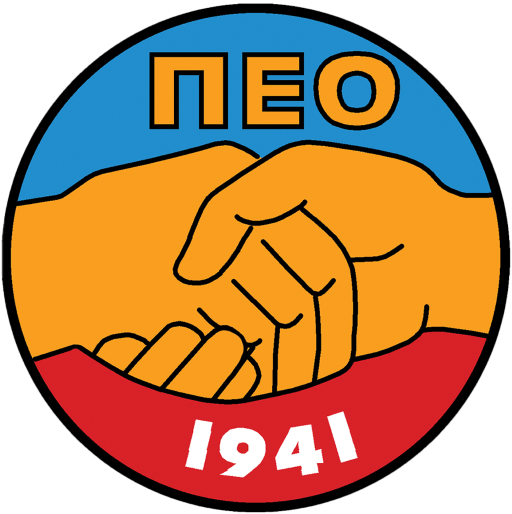History written in blood cannot be falsified
By Mari-Constance Constantinou, Head of the Historical Labour Museum and Historical Archive of the Pancyprian Federation of Labour (PEO)
May 2022
History that is based on documents and testimonies is written once. To try to subsequently adapt it, through falsifications, to suit the needs of certain forces and circles is an insult to those who wrote history with their blood.
In the history of the workers movement in Cyprus, the struggles of the Greek Cypriot and Turkish Cypriot miners and construction workers in 1948 are a milestone for many reasons. Not only for the mass participation of workers and for what was won. They are also represent milestone for the fact that the striking workers confronted and clashed with a powerful alliance between the British colonialists, the employers, the church and organised strike-breaking scabs, who today some are trying to portray as heroes. Let us recall the real history with documentary evidence…
On the eve of the Second World War, the mining industry in Cyprus reached its peak with significant exports of pyrite and chalcopyrite. The number of workers employed in all the mining companies exceeded 10,000, the majority of them being landless peasants. However, the working conditions and terms of employment of the miners were miserable and inhuman.
In the period 1938-1939, the British colonial regime under the colonial governor Palmer was tormenting Cyprus. The miners of the Cyprus Mining Company (KME), in an effort to organise themselves to solve their problems, sent the first application to the government for the establishment of a trade union. The intransigent attitude of the government, which described the document as “communist” and ignored it, left the miners with no other option but that of waging a continuous struggle to assert their just demands.
The establishment of the Pancyprian Trade Union Committee (PSE) in 1941, which was the joint creation of Greek Cypriot and Turkish Cypriot workers, created new conditions and possibilities. There was a hard and long preparation for the struggles that were to be fought. The struggles for workers’ rights developed into a sharp class confrontation between the working class on the one hand and the ruling class, the employers, the big foreign companies, the colonial government and the church on the other.
The first major class struggle began with the strikes waged by the 2,100 miners of the American company KME that lasted 121 days demanding a wage increase, the reduction of working hours, overtime pay and rest leave. In this battle, colonial forces opened fire on the striking workers, resulting in many being injured. During these strikes, 77 strikers were sentenced to prison and hundreds of others were fined. Importantly, however, the miners won 33% increases, forcing the company to negotiate.
This was followed by the asbestos miners’ strike, which lasted 29 days which led to over 60 workers being jailed. On one occasion, on 3 March 1948, angry strikers tried to stop strike-breaking scabs, but were cowardly attacked by the police who fired at point blank range and thus stained that day with their blood. The strikers Chakir Rizet, Ahmet Neziati, Giorgos Georgiades, Izzet Ali Izet, Mehmet Pillal and Andreas Charalambous were injured very seriously and taken to Nicosia Hospital.
Workers demanded an increase in wages, the payment of overtime on Sundays, recognition of the Labour Disputes Committee, repair of workers’ houses and the reinstatement of the dismissed workers.
The year ended with the strike of 1,200 construction workers that lasted 118 days. Their demands were a wage increase and an increase in the employer’s contribution to Social Insurance. During this strike 60 construction workers were imprisoned.
The solidarity and moral/financial support for the strikers from all the Cypriot people was touching from the very first days of the strikes. Money, food, clothes and all kinds of help came from everywhere. Cars were loaded daily from various towns and villages on their way to Mavrovouni and Xeros.
During this period of fierce class struggles, the alliance of workers – peasants and small and medium-sized businesses was established and expressed in practice through the development of an unprecedented movement of solidarity with the striking workers. The battle for bread and milk for the children of the strikers, the struggle for their moral and material support is one of the stunning manifestations of genuine and selfless social solidarity.
“Better 12 ‘blue’ than 8 ‘red’ working hours”
Although the demands of the Greek Cypriot and Turkish Cypriot workers were justified, besides the employer’s outright refusal, the strikers faced fierce resistance from the colonial police, the hostile attitude on the part of the church and, above all, the strike-breaking attitude of the so-called “New Trade Unions” (SEK) which were recruited by the colonialists to achieve the dispersal of the strikers by applying the well-known British doctrine of “divide and rule”. The church issued a circular calling on the strikers to surrender, while SEK issued a statement urging the colonial police to enlist the help of the British army to “crush communist anarchy once and for all”. SEK leading officials went around villages recruiting strike-breaking scabs for the American Company under the slogan “Better to work 12 ‘blue’ than 8 ‘red’ hours”.
The company’s own manager at the time, Hendrix, declared: “My country is spending millions of dollars to fight communism all over the world. It will not consider spending a few thousand pounds for the same purpose in Cyprus.” He was evidently talking about the suppression of the strikers through the funding of organised strike-breaking.
P.S.: This text was written to confirm and consolidate the historical truth and is dedicated to the memory of the thousands of Greek Cypriot and Turkish Cypriot miners, asbestos miners and construction workers who were persecuted, blackmailed, injured and imprisoned for their struggles for a better future.
